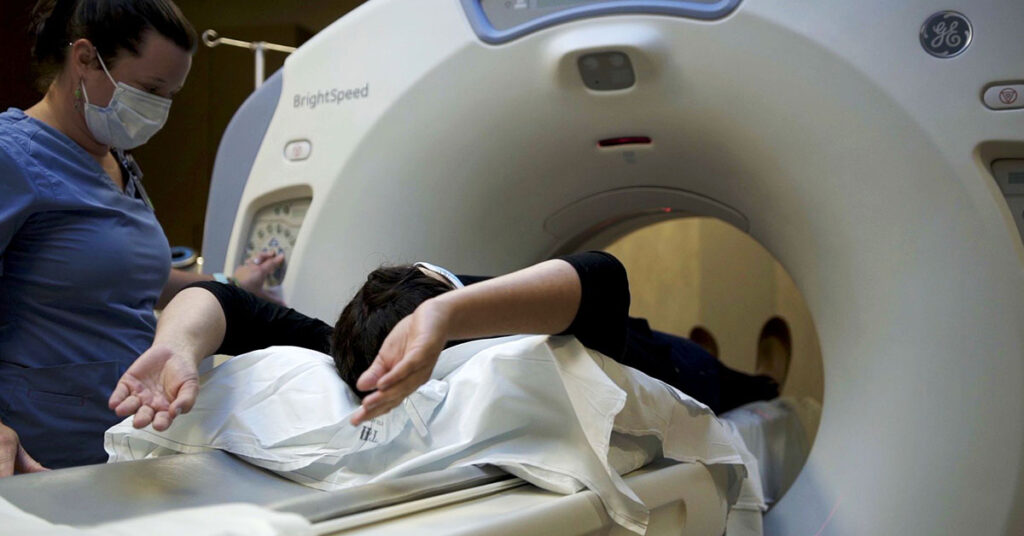Introduction
The ability to see the inside organs of the body and spot problems early makes radiology diagnostic imaging a crucial tool in contemporary healthcare. Medical professionals can make precise diagnoses and create specialized treatment plans because to the accurate and comprehensive pictures that radiology imaging techniques offer for various body areas. Radiology employs a variety of radiation, such as X-rays, and magnetic fields, as well as sound waves, to create pictures. The non-invasive nature of these imaging methods lowers the possibility of problems and increases patient comfort. Before symptoms show, radiology imaging can identify a variety of illnesses like cancer, and heart disease, as well as neurological diseases, enabling doctors to start treating patients sooner and enhancing patient outcomes. Radiology imaging will continue to play an increasingly important role in healthcare as technology develops, assisting doctors in detecting and treating illnesses even sooner and enhancing patient outcomes.
Major benefits of radiology diagnostic imaging
-
Early Detection of Diseases
The capacity of radiology diagnostic imaging to identify illnesses early is one of its most important advantages. Even before symptoms occur, radiology can identify illnesses in their earliest stages. Early identification is crucial because it enables medical professionals to start treating patients before the condition worsens, lowering the risk of complications and enhancing results. Cancer, and heart disease, as well as neurological issues are a few examples of illnesses that radiography may help identify early.
One of the most prevalent disorders that may be caught early through radiography is cancer. Breast cancer can be identified early on through radiology imaging techniques like mammography, which enables medical professionals to start treating patients before the disease has progressed. Similar to that, a colonoscopy, which employs radiological imaging to inspect the colon for suspicious growths, can identify colon cancer early. Through radiography, early cancer identification can considerably enhance the patient’s prognosis and boost the likelihood of a favorable result.
Another ailment that can be caught early by radiography is heart disease. Cardiovascular imaging procedures like computed tomography (CT) and echocardiography can find blockages and other anomalies in the blood arteries of the heart. When heart disease is discovered early, doctors can start prescribing medicine and changing patients’ lifestyles to stop the illness’s progression and lower their chance of having a heart attack.
Through radiography imaging, neurological illnesses like Alzheimer’s disease can also be caught early. Alzheimer’s disease-related alterations in the brain can be found using positron emission tomography (PET) and magnetic resonance imaging (MRI) examinations. Early diagnosis of Alzheimer’s disease enables medical professionals to start treating patients sooner and enhances their quality of life.
-
Accurate Diagnosis
Diagnostic imaging in radiology gives medical professionals precise, in-depth pictures of the interior organs. A variety of medical disorders can be accurately diagnosed by doctors using this imaging technology. Bone fractures, and infections, as well as malignancies are a few examples of illnesses that may be precisely detected by radiography.
X-rays and CT scans used in radiology allow for the precise diagnosis of bone fractures. These imaging methods enable medical professionals to see the bones and spot any breaks or fractures. It is essential to correctly diagnose bone fractures so that a doctor can recommend the right course of treatment, like immobilization or surgery, to encourage healthy healing.
Radiology imaging can also be used to precisely diagnose infections. Radiology procedures like MRI and ultrasound can view the affected region and assess the infection’s severity. The correct antibiotic medication can be prescribed by doctors to treat infections and stop them from spreading.
Radiology imaging can be used to correctly identify tumors, both benign and malignant. Tumors can be found and their size and location can be determined using radiology procedures like CT scans and MRI. Doctors can determine the ideal course of treatment, like surgery, radiation therapy, or chemotherapy, by accurately diagnosing malignancies.
-
Non-invasive Procedure
Diagnostic imaging in radiology is a non-invasive process that has several advantages for patients. Incisions and anesthesia are not necessary for radiological imaging procedures, which lowers the risk of complications and increases patient comfort. Additionally, compared to other diagnostic procedures, radiology imaging treatments are often faster, which minimizes the length of time patients must stay in the hospital.
Patients who is unable to tolerate or are at high risk for consequences from invasive treatments benefit most from non-invasive radiological imaging modalities like ultrasonography and MRI. Patients who have heart or lung illness, for instance, might not be able to undergo invasive procedures like angiography or bronchoscopy. In these situations, non-invasive radiological imaging techniques can provide clinicians the knowledge they need without endangering the patient.
-
Fast Results:
A medical procedure called radiology imaging employs many technologies to provide pictures of the interior of a human body. This imaging method’s quickness is one of its benefits. Quick picture production from radiology imaging enables medical professionals to swiftly decide on a diagnosis and course of therapy.
For instance, pictures may be produced by X-rays, CT scans, and MRIs in a matter of minutes or seconds. In emergency conditions, where prompt and correct diagnosis might be crucial, speed is especially crucial. Imaging performed by radiologists can also be used to track how well a patient is responding to therapy, enabling medical professionals to adapt as necessary.
Moreover, radiological imaging may be carried out even more swiftly and precisely with the assistance of cutting-edge technologies like artificial intelligence. AI-powered technologies can assist in identifying and analyzing anomalies in the photos and giving clinicians the data they need to decide on a diagnosis and course of therapy.
Conclusion
The way doctors identify and treat a variety of medical diseases has been changed by the radiation diagnostic imaging system in usa. It has greatly enhanced patient outcomes and decreased healthcare costs due to its capacity to identify illnesses early, provide precise diagnoses, and deliver less invasive therapies. Additionally, radiological imaging gives medical professionals comprehensive details about a patient’s health, enabling them to create personalized treatment regimens.
Radiology imaging will probably become increasingly more important to healthcare as technology develops. Doctors will be able to identify and treat illnesses even sooner because to new imaging techniques and technology, which will significantly enhance patient outcomes. Overall, radiological diagnostic imaging is a crucial tool in contemporary healthcare and has several advantages for both patients and medical professionals.


